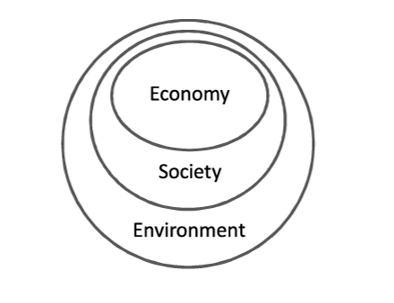AspenTech Sustainability Advisor Paige Morse shared her thoughts about COP26 conference in Glasgow, Scotland on her recent blog titled “It’s All About Arithmetic and Physics.”
But what about chemistry?
On December 10, 1995, the Nobel Prize in Chemistry was awarded jointly to Paul Crutzen, Mario Molina and F. Sherwood Rowland "for their work in atmospheric chemistry, particularly concerning the formation and decomposition of ozone." Paul Crutzen demonstrated in 1970 formation of nitrogen oxides during combustion, while in 1974, Molina and Rowland calculated that unless the use of chlorofluorocarbons (CFCs) was drastically reduced, the ozone layer would be seriously damaged within decades.
The Royal Swedish Academy of Sciences recognized their contribution for creating a clearer understanding of the fundamental chemical phenomena, and also of the large-scale and often negative consequences of human behavior. Their work led to the Montreal Protocol, banning CFCs to protect the ozone layer.
Similar to the protection of the ozone layer, many policies and agreements have been implemented to try to mitigate the negative impact of large-scale human behavior on the environment. And when we talk about environmental impact, the word “sustainability” always comes to mind. So, what is sustainability?
The classic definition refers to "meeting the needs of the present generation without compromising the ability of future generations to meet their needs" (Brundtland, 1987). This considers three areas: economy, environment and society. Personally, I like the “concentric circles” approach, where economy and society are constrained by environmental limits, providing the environmental aspect with a critical role.

Representation of sustainability as concentric circles approach
According to a 2014 IPCC Mitigation of Climate Change report, about a third of global carbon emissions come from industrial activities, placing energy and chemical companies in a key position in the fight against climate change. While it is still important to focus efforts on energy efficiency and waste reduction, recent pledges and agreements from COP26 require that energy and chemical companies act upon new strategies, while at the same time, report more frequently on their progress towards their sustainability goals.
The 2020 BP Energy Outlook summary shows that to reduce emissions, it is necessary to use a “combination of increased switching to low carbon fuels, greater gains in energy efficiency, and growing use of carbon capture technologies (CCUS).” The report shows that energy efficiency is not enough and low carbon fuels would contribute to around 45% of the progress to reach net-zero by 2050.
We need to work on industrial-scale technologies that are more economically feasible and commercially available. Research on carbon capture has been continuing for many years now, but as a key pathway to reduce emissions, it must scale up. In addition to emissions, we also need to reduce waste: make more durable materials and develop materials that are easily recyclable.
AspenTech solutions help to save energy, accelerate scale up of new technologies and drive innovation, thinking about not only today, but also with a view to the future.
Process simulation in Aspen Plus® and Aspen HYSYS® allow the use of carbon footprint as part of optimization of new process designs, as well as for existing facilities. The embedded capabilities can help energy and chemical companies quantify emissions from process (Scope 1) and from energy consumption (Scope 2) and include a value for carbon taxes to evaluate process economics.
By quantifying the emissions, it is possible to evaluate the impact of incorporating new processes into existing facilities, such as adding a biofuels plant into a refinery or adding a carbon capture plant to a chemicals complex, validating the impact of strategies towards 2030 or 2050 sustainability goals.
This is also relevant in operations, especially to show and report progress. Aspen Plus and Aspen HYSYS process models can be connected online as digital twins, allowing for easier tracking and reporting of emissions in existing operations, including those new processes, once they are in operation.
With this in mind, we have put together over 50 sustainability sample models in products across our portfolio. We make it easier for to you to increase innovation and optimize new and existing processes by combining our 40 years of experience and AI capabilities to help you reach your long-term goals much faster.
Be ready for climate action through new levels of efficiency and innovation!



Leave A Comment